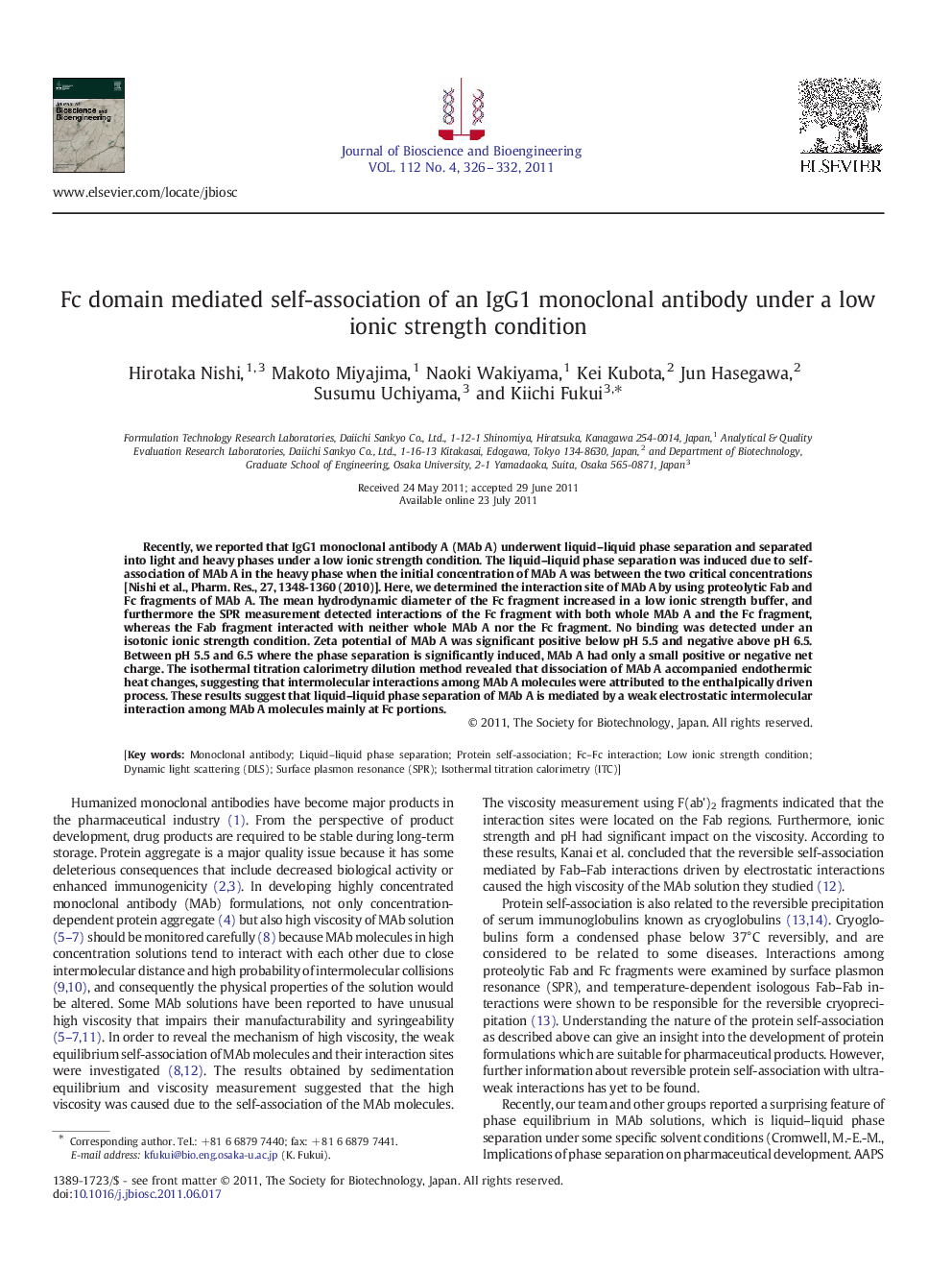| Article ID | Journal | Published Year | Pages | File Type |
|---|---|---|---|---|
| 21073 | Journal of Bioscience and Bioengineering | 2011 | 7 Pages |
Recently, we reported that IgG1 monoclonal antibody A (MAb A) underwent liquid–liquid phase separation and separated into light and heavy phases under a low ionic strength condition. The liquid–liquid phase separation was induced due to self-association of MAb A in the heavy phase when the initial concentration of MAb A was between the two critical concentrations [Nishi et al., Pharm. Res., 27, 1348-1360 (2010)]. Here, we determined the interaction site of MAb A by using proteolytic Fab and Fc fragments of MAb A. The mean hydrodynamic diameter of the Fc fragment increased in a low ionic strength buffer, and furthermore the SPR measurement detected interactions of the Fc fragment with both whole MAb A and the Fc fragment, whereas the Fab fragment interacted with neither whole MAb A nor the Fc fragment. No binding was detected under an isotonic ionic strength condition. Zeta potential of MAb A was significant positive below pH 5.5 and negative above pH 6.5. Between pH 5.5 and 6.5 where the phase separation is significantly induced, MAb A had only a small positive or negative net charge. The isothermal titration calorimetry dilution method revealed that dissociation of MAb A accompanied endothermic heat changes, suggesting that intermolecular interactions among MAb A molecules were attributed to the enthalpically driven process. These results suggest that liquid–liquid phase separation of MAb A is mediated by a weak electrostatic intermolecular interaction among MAb A molecules mainly at Fc portions.
